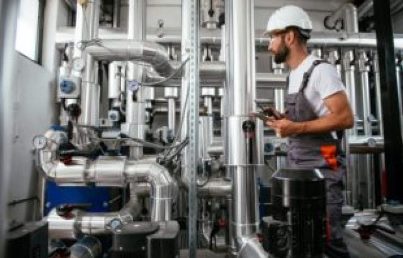How to Begin your first day at the oilfield facility:
Clearly, as an oilfield operator ,the first day at the oilfield facility is the hardest day in the practical life, because you will be astonished of the huge facility, great number of pipelines here and there, many equipment “valves, heat exchangers, pumps, heaters, vessels, tanks, controls …etc”, many technicians and engineers here and there, one of them is calibrating a control valve, while the other is inspecting a pump or a heat exchanger, then you reach the control room and find a big panel showing the whole process and many operators are sitting behind the PCs to control this huge facility, all these things will make you feel that you have forgotten all your theoretical study 🙂 .
So; how to deal with this situation as an Oilfield operator, and how to pass this difficulties?
the answer to this question is summarized by the following steps:
1. first of all, you have to understand safety procedures, it is preferred that you enter an “Oilfield HSE course” to understand the risks of the oilfield.
2. you have to wear your Personal Protection Equipment PPE in the facility, because “Safety is First”.
3. You have to study and remember all the fire fighting equipment and their places such as hydrants and how to use them.
read also What is Air Compressor Dryer System?
4. after understanding safety procedures, you have to understand the process, what is exactly going on, how the oil or gas is processed, read about it, collect many resources from the web and read them all to have a full idea about the whole process. this will help you to have a practical and experimental experience at the same time.
5. Study all the PFDs and PIDs of the facility, understand the pipeline connections and the pipelines entering and leaving each process “their diameters, classes ..etc”.
6. write down in your notebook the specifications of each equipment in the process, the setpoint of each control valve, the low and high limits for each alarm, the setpoints of each safety valve.
7. Write down all the operation problems, and how to deal with them, this will help you deal with these problems faster in the future.
8. after each overall, check the whole process, there will be a certain need to a leak test, try the nitrogen.
9. after the handover, check the whole process from the control room to the far away points in the facility, read the previous notes, this will help you be aware of any problems, and you may predict any further problems.
10. after checking the whole process, check the fire fighting system, including the fire water tanks, pumps , hydrants and check whether the portable fire extinguishers are in place.
11. make use of the historical trends in the PC, and try to understand the relationship between each 2 variables, this thing will help better understand the process.
12. make a routine job for replacing the equipment daily of weekly, for example operate pump and compressor A in the first week of the month, and replace them with pump and compressor B during the second week.
13. observe the oil levels of each pump, compressor or any other equipment after the handover.
14. each one in your shift must understand his duty, especially when shut down occurs, this will help you to perform a smooth shut down and may help your team avoid any confusion during the shut down.
and always remember,

